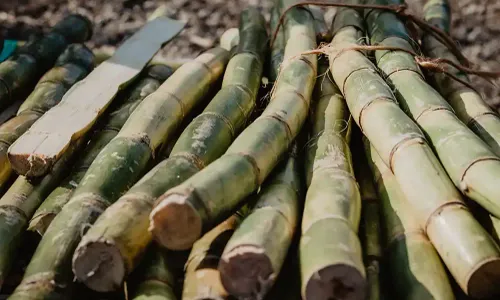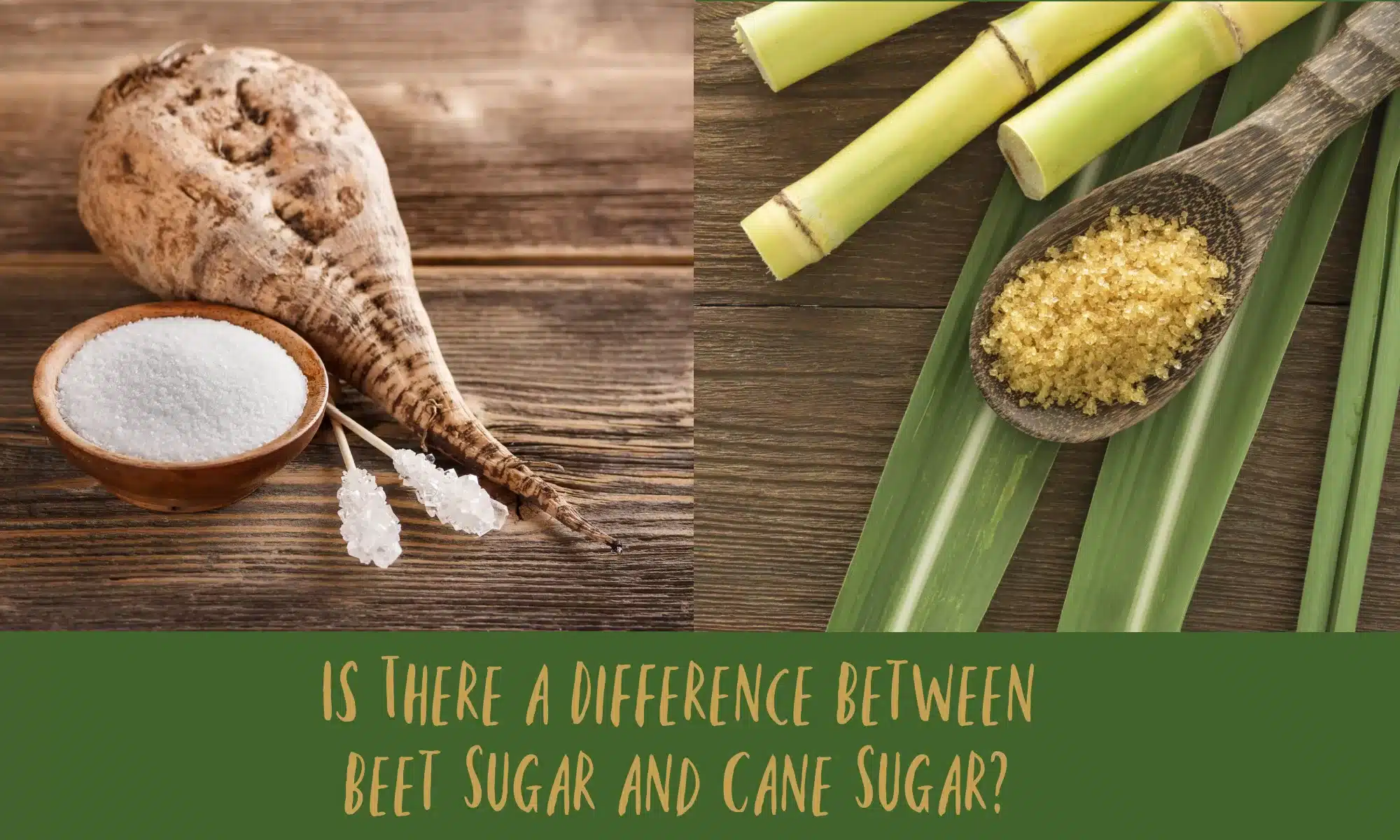Sugar beet vs sugar cane: A complete guide to purposes and production techniques
Unveiling the Truth Behind Sugar Beet Vs Sugar Cane: Advantages, Utilizes, and Handling Techniques Discussed
The difference between sugar beet and sugar cane is typically overlooked in conversations regarding sugar manufacturing. Each plant provides special advantages and applications in various markets. Their growing techniques and processing techniques likewise vary significantly. Recognizing these nuances is crucial for stakeholders in the sugar industry. What ramifications do these differences have for health and wellness, taste, and environmental effect? Checking out these aspects can disclose deeper understandings into the international sugar market.

Summary of Sugar Beet and Sugar Cane
Sugar beet and sugar cane are two primary resources of sugar, each with distinct characteristics and farming techniques. Sugar beet, a root vegetable, prospers in pleasant environments and is normally collected in the fall. Its high sugar web content, varying from 15% to 20%, makes it a valuable crop for sugar manufacturing. The process involves removing juice from the beets, which is then improved into granulated sugar.
In comparison, sugar cane is an exotic turf that prospers in warm, moist environments. It can attain a sugar web content of up to 14%, but its high, coarse stalks need considerable handling. The cane is squashed to remove juice, which undertakes boiling and formation to generate sugar. Both resources add substantially to the global sugar supply, with sugar beet mainly grown in Europe and The United States And Canada, while sugar cane is mainly grown in Brazil, India, and other tropical areas.
Farming Practices: Sugar Beet vs. Sugar Cane
Cultivation practices for sugar beet and sugar cane differ substantially as a result of their distinctive expanding problems. Sugar beetroots grow in cooler environments with well-drained dirt, while sugar cane prefers warmer temperature levels and bountiful dampness. Furthermore, the harvesting strategies employed for every plant show these ecological needs and affect total yield and high quality.
Expanding Problems Contrast
While both sugar beet and sugar cane prosper in particular environmental conditions, their cultivation techniques vary noticeably. Sugar beet is mostly grown in warm regions, favoring cooler environments with well-drained dirt and modest rains. It needs an expanding period of concerning 90 to 120 days, with optimal temperatures between 15 ° C to 25 ° C. In contrast, sugar cane embellishments in exotic and subtropical climates, growing in cozy temperatures ranging from 20 ° C to 32 ° C. It requires abundant sunshine and constant rainfall, typically needing irrigation in drier locations. Sugar cane has a much longer growing cycle, typically lasting 12 to 24 months. These differences in growing problems substantially influence the geographical circulation and agricultural techniques connected with each crop.
Harvesting Strategies Distinctions
The harvesting strategies for sugar beet and sugar cane mirror their distinct growth characteristics and agricultural methods. Sugar beet is typically gathered mechanically, with farmers developed to root out the whole plant, making sure marginal soil disturbance. The beetroots are after that transferred for handling quickly after harvest to maintain quality. In comparison, sugar cane harvesting frequently includes a mix of guidebook and mechanical methods. Employees might initially cut the cane by hand, particularly in areas where automation is much less feasible. Subsequently, specialized machinery is utilized to collect and deliver the cut stalks to refining centers. These differing techniques not only effect performance yet also influence the high quality and return of the last sugar products, showcasing the versatility of each crop to its setting.
Nutritional Comparison and Health Perks
When contrasting the dietary accounts of sugar beet and sugar cane, it becomes clear that each offers distinct health and wellness advantages. Sugar beetroots are abundant in vital nutrients like folate, manganese, and potassium, which add to total health. They likewise consist of fiber, which helps food digestion and might aid manage blood sugar level levels. Furthermore, sugar beets are understood for their antioxidant residential or commercial properties, which can fight oxidative stress and anxiety.
On the other hand, sugar cane is mostly made up of sucrose, supplying quick energy. While it does not have the very same degree of nutrients located in sugar beets, sugar cane does contain small quantities of B minerals and vitamins such as calcium and magnesium. Moreover, sugar cane juice is typically promoted for its hydrating residential or commercial properties and prospective wellness advantages, including boosted digestion health. Ultimately, the option in between sugar beet and sugar cane may rely on private health goals and dietary preferences.
Taste Profiles and Culinary Uses
Taste accounts of sugar beet and sugar cane vary markedly, influencing their culinary applications (Sugar beet vs sugar cane). Sugar cane, with its naturally pleasant and intricate taste, is often favored in beverages, treats, and numerous cooking recipes. It lends an abundant, caramel-like note that improves the taste of items such as syrups, molasses, and rum. In contrast, sugar beet has a more neutral and much less fragrant taste, making it ideal for applications where sweet taste is preferred without modifying the recipe's fundamental tastes. It is frequently utilized in processed foods, baked items, and sugar
Cooking specialists usually choose sugar cane for its depth and splendor, specifically in exquisite food preparation and craft drinks. Alternatively, sugar beet's flexibility as a sweetener in mass-produced items deals with a wider market. Eventually, the option between these two sugars can significantly impact flavor profiles and overall culinary experiences.
Ecological Effect of Sugar Manufacturing
Sugar manufacturing, whether from sugar beet or sugar cane, brings considerable environmental ramifications. Sugar cane growing commonly causes logging, especially in tropical regions, interrupting regional ecological communities and adding to biodiversity loss. The considerable use plant foods and chemicals in both sugar beet and sugar cane farming can lead to soil destruction and water pollution, affecting surrounding habitats and communities. In addition, the high water intake needed for sugar cane watering poses a hazard to local this link water supplies, particularly in arid areas.
On the other hand, sugar beet farming typically takes place in warm climates, which might alleviate some deforestation issues. It is not without its very own difficulties, consisting of soil disintegration and reliance on chemical inputs. Overall, the ecological effect of sugar production is complex, necessitating lasting farming practices and recognition of resource monitoring to reduce damage to ecosystems and advertise ecological health and wellness.
Processing Methods: From Plant to Sugar
Numerous handling methods are utilized to change sugar beet and sugar cane right into granulated sugar, each approach mirroring the one-of-a-kind qualities of the resource plant. For sugar beetroots, the procedure begins with washing and slicing the origins right into slim strips, which are then subjected to diffusion-- a method where hot water essences sugar from the beet slices. The resulting fluid is cleansed, concentrated, and crystallized.
In contrast, sugar cane processing entails crushing the stalks to extract juice, complied with by clarification to eliminate pollutants. The juice is then evaporated, resulting in syrup that goes through crystallization. Both processes are adhered to by separation of the sugar crystals from the molasses, which is a by-product. The lasts include drying out and packaging the granulated sugar for distribution. These methods highlight the distinct pathways whereby these two plants generate sugar, each with its very own set of challenges and effectiveness.
Financial Aspects of Sugar Beet and Sugar Cane Industries
The economic landscape of the sugar beet and sugar cane markets exposes notable differences in production prices, market dynamics, and local influences. Sugar beet, largely grown in temperate environments, usually incurs higher production expenses because of labor and input costs. On the other hand, sugar cane prospers in tropical regions, read what he said typically taking advantage of lower labor costs and beneficial climatic conditions, which can lead to greater returns.
Market dynamics also differ, as sugar cane controls global manufacturing, accounting for around 80% of sugar outcome. This frequency influences pricing structures and trade circulations. On the other hand, sugar beet is a lot more regionally focused, especially in Europe and North America, affecting local economic climates depending on beet manufacturing.
In addition, changes in worldwide sugar prices can significantly impact both industries, affecting farmer earnings and investment levels. Comprehending these financial aspects is essential for stakeholders aiming to browse the complexities of the sugar market properly.

Often Asked Concerns

Can Sugar Beet and Sugar Cane Be Intercropped Efficiently?
Intercropping sugar beet and sugar cane presents difficulties as a result of differing development demands and environmental needs. Nonetheless, with cautious monitoring and suitable problems, it may produce advantages such as improved soil health and wellness and source effectiveness.
What Are the Historical Beginnings of Sugar Beet and Sugar Cane?
The historic origins of sugar beet trace back to 18th century Europe, while sugar cane has roots in Southeast Asia, cultivated for countless years. Both plants have actually considerably affected worldwide sugar production and farming.
How Do Sugar Beet and Sugar Cane Affect Soil Wellness?
The effects of sugar beet and sugar cane on soil wellness vary. Sugar beet can enhance dirt framework and nutrient web content, while visit this site right here sugar cane may diminish nutrients otherwise taken care of properly, impacting long-lasting soil fertility.
Are There Any Kind Of Emerging Technologies in Sugar Manufacturing?
Emerging technologies in sugar manufacturing consist of accuracy farming, advanced hereditary design for greater returns, and innovative extraction techniques. These innovations aim to improve effectiveness, minimize ecological influence, and improve the overall sustainability of sugar production processes.
What Are the Trick Distinctions in Labor Requirements for Both Plants?
The vital distinctions in labor requirements for sugar beet and sugar cane depend on growing, harvesting, and handling. Sugar beet vs sugar cane. Sugar beet generally demands more mechanization, while sugar cane typically needs extra manual labor for harvesting and processing stages